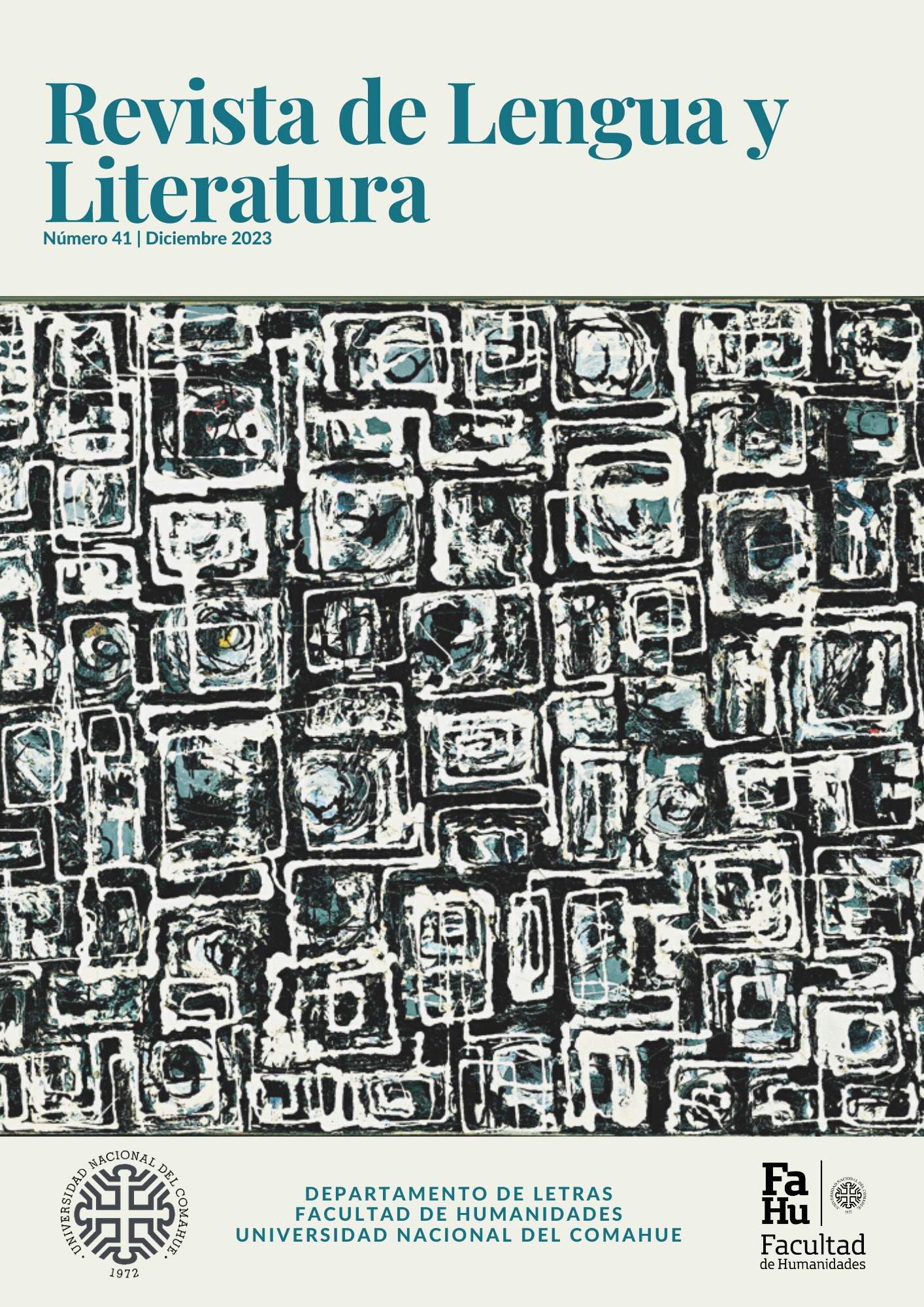Cartography, eternity, and terror in Dante's Inferno
Keywords:
Borges, Commedia, Alighieri, Vision, ApocalypseAbstract
Thispaper explores Dante Alighieri'sCommedia,in the Spanish version, translated and annotated by Narciso Bruzzi (1994),in dialogue with Jorge Luis Borges' reading of it and with some developments by the Argentine author regarding eternity and cartographic writing, including a review of the critical bibliography that addresses the intertextual relationship between both universal writers.Thefirst partexploresthe relationship between verbalization and cartography in Dante's major work,in orden todistinguishboth phenomena as two levels of rationalization of the visionary experience, which is defined as oneroid,in thatit is similar to the dream in its temporality butnotcoincidentwith it in the permanence of the map of the places between different visionary sections. Then, around the punitive function of the infernal space, reviewed by Borges, the notion of eternity is examined, with emphasis on its character of repetition and torture. Finally, taking into account the social function of theCommediaas a prophetic and apocalyptic text, as well as itscontext of production, Dante's Inferno is characterized as a tool of political terror, a precursor of its manifestations in the following centuries.
Downloads
References
Abadi, Mauricio (1977). Renacimiento de Edipo: la vida del hombre en la dialéctica del adentro y del afuera. Buenos Aires: Editorial Trieb.
Alighieri, Dante (1994). “El Infierno”. En La Divina Comedia. Barcelona: Océano.
Borges, Jorge Luis (1982) “El noble castillo del Canto IV”. Nueve ensayos dantescos. Buenos Aires: Emecé, 23-32.
Borges, Jorge Luis (1974). “Historia de la eternidad”. En Obras completas 1923-1972. Buenos Aires: Emecé, 353-367.
Borges, Jorge Luis (1974). “Nathaniel Hawthorne”. En Obras completas 1923-1972. Buenos Aires: Emecé, 670-685.
Borges, Jorge Luis (2001). Nove saggi danteschi. Milán: Adelphi.
Campaña, Mario (2021). “Dante Antimoderno: Entrevista a Michele Curnis, Comisario de La Exposición de Manuscritos de La Divina Comedia En La Biblioteca Nacional de España”. Barcelona: Guaraguao, 25, 68, 11–25.
Cirlot, Juan Eduardo (1969). Diccionario de símbolos. Madrid: Siruela.
Corbin, Henry (2006). “Geografìa visionaria”. En Cuerpo espiritual y Tierra celeste. Madrid: Siruela.
Di Patre, Patrizia (2021). "L’itinerario borgesiano della commedia". En Perassi, Emilia. Dante nelle letterature straniere: Dialoghi er percorsi. Turín: Ledizione, 38, 253-267.
García, Mariano (2019). “Borges y sus fuentes teóricas del género alegórico”. Pittsburgh: Variaciones Borges, 48, 79–100.
Jung, Carl Gustav (1966). Recuerdos, sueños y pensamientos. Barcelona: Seix Barral.
Jung, Carl Gustav (2010). “Liber primus”. En The Red Book. Nueva York: W. W. Norton & Company.
Jung, Carl Gustav (2010). Synchronicity: An Acausal Connecting Principle. Princeton: Princeton University Press.
Lacan, Jacques (1982). Las formaciones del inconsciente. Buenos Aires: Paidós.
Lacan, Jacques (1990). Television: A Challenge to the Psychoanalytic Establishment. Nueva York: W. W. Norton and Company.
Maselli, Matteo (2018). “Le Vie Oblique Dell’allusione: Borges, Dante e Il Dialogo Sull’eterno”. Pittsburgh: Variaciones Borges, 45, 61–78.
Puig, Arnau (2021). "Sobre unas imágenes posibles acerca de la Divina Comedia: Manolo Belzunce”. Barcelona: Dante e l'Arte, 8, 203-224.
Quintana Tejera, Luis (2021). La Comedia de Dante a la luz de la interpretación borgeana. Ciudad de México: Universidad Autónoma del Estado de México.
Tambling, Jeremy (1998). “Illustrating Accusation: Blake on Dante’s ‘Commedia’”. Baltimore: Studies in Romanticism, 37, 3, 395–420.
Downloads
Published
How to Cite
Issue
Section
License
Copyright (c) 2023 Revista de Lengua y LiteraturaLa aceptación de colaboraciones por parte de la revista implica la cesión no exclusiva de los derechos patrimoniales de los autores a favor del editor, quien permite la reutilización bajo Licencia Atribución-NoComercial-SinDerivadas 2.5 Argentina (CC BY-NC-ND 2.5 AR)
Usted es libre de:
Compartir — copiar y redistribuir el material en cualquier medio o formato
La licenciante no puede revocar estas libertades en tanto usted siga los términos de la licencia
Bajo los siguientes términos:
Atribución — Usted debe dar crédito de manera adecuada, brindar un enlace a la licencia, e indicar si se han realizado cambios. Puede hacerlo en cualquier forma razonable, pero no de forma tal que sugiera que usted o su uso tienen el apoyo de la licenciante.
NoComercial — Usted no puede hacer uso del material con propósitos comerciales.
SinDerivadas — Si remezcla, transforma o crea a partir
El simple hecho de cambiar el formato nunca genera una obra derivada, no podrá distribuir el material modificado.
No hay restricciones adicionales — No puede aplicar términos legales ni medidas tecnológicas que restrinjan legalmente a otras a hacer cualquier uso permitido por la licencia.





